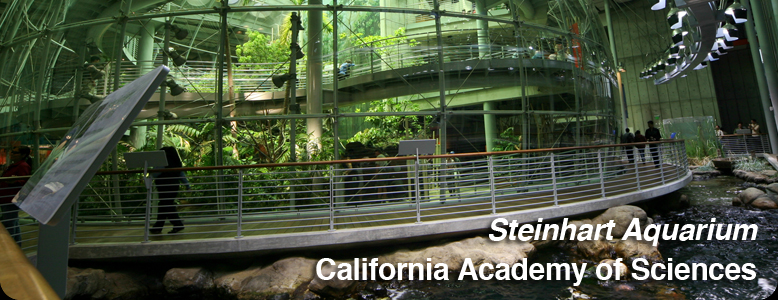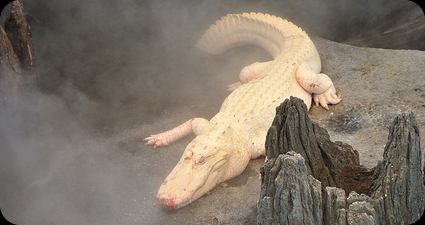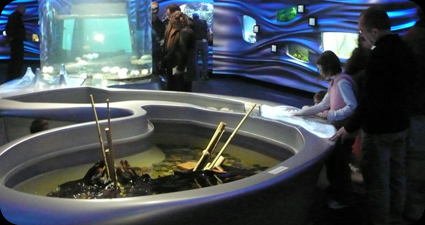Project: Rain Forest, Penguins, and Water Planet Exhibits
Client: Thinc Design / California Academy of Sciences
Project Phases: Design through Fabrication
Project Background:
The new Steinhart Aquarium is a world-class aquarium at the heart of a striking new 21st century natural history museum. Featuring the largest indoor living coral reef ecosystem exhibit in the world, a living rainforest in a 90 ft. sphere, and over two hundred additional living and virtual exhibits, the Aquarium offers its visitors the chance to encounter and explore the spectacular diversity of life on earth.
Challenge:
Exhibit designer Thinc Design came to Itís Alive Co. deal with three areas of the exhibit: The Rain Forest, the Penguin exhibit, and the Water Planet. Each area had its own impressive new ideas from Thinc Design, which needed to be made real. The Penguins needed a means to keep the human glass clean. The Water Planet area contained Water Imagers, a whole new integrated system of AV, projection, gesture feedback, water touch, mist effects, hot/cold effects and water features all rolled into one small custom curving shell. The Rain Forest needed multiple zones of water high pressure misting to allow the aquarium operators to control the amount of humidity and mist density in all areas.
Solution:
Itís Alive Co. worked hand in hand with Thinc Design to design each technical system. For the Water Imagers, we carefully chose specific-sized components for hot/cold touch, water jets, miniature dry misting systems, and water filtration and pumping systems. We integrated the technology within the curving outer shells using three dimensional CAD to make sure the components fit and could be maintained. Then, we designed the multi-zone high-pressure water misting system (mee fog / atomized water misting) for the Rain Forest, including controls, equipment locations, and the misting nozzle distribution in the exhibit. For the Penguins, we designed a system of automatically washing the viewing glass. All technical design required careful and analytical interface and coordination with the exhibit designer and the museum operator staff to address all their concerns.









